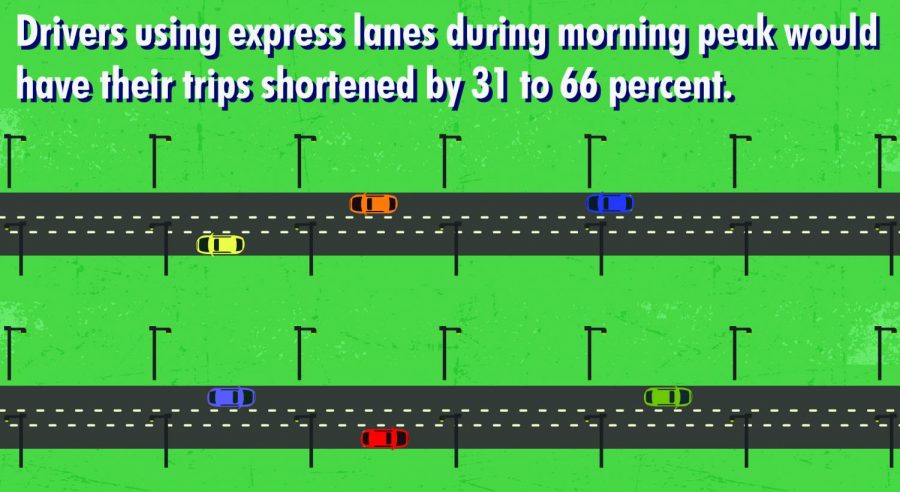Congestion pricing could clear up Chicago
Congestion pricing could clear up Chicago
December 11, 2017
With traffic on local highways causing daily delays, a new infrastructural method may be the next solution to Chicagoland’s daily gridlock headaches.
The idea of implementing congestion pricing—a system of paying to enter an express lane to avoid everyday highway traffic—is being discussed among local transportation experts.
Revenue from the system could support local public transit funding along with providing toll discounts to low-income individuals, according to the Federal Highway Administration’s website.
Opportunities to add these lanes could occur when parts of the Stevenson or Eisenhower expressways—which have either gone through or been granted environmental clearance—could go under construction, according to Jesse Elam, director at Chicago Metropolitan Agency for Planning.
Congestion on Chicago’s roadways has been increasing by 5 percent annually for the past 30 years. In the most current data CMAP found in 2012, the average Chicago commuter spent 71 hours a year in traffic. On the roads and 11 Chicagoland expressways, tollways and interchanges studied in the report, the average speed of cars in traffic never averaged more than 35 mph during peak traffic times from 6 a.m. to 7 p.m.
“[Chicago] would definitely benefit [from] congestion pricing,” said P.S. Sriraj, director of the Urban Transportation Center at the University of Illinois at Chicago. “Most [cities] have seen a very tangible impact in terms of using congestion [pricing].”
Stretches of road on I-90 and I-94 were ranked first, 23rd and 46th in the top 50 busiest roadways in the country, according to a 2015 American Highway Users Alliance report. These jams cost Chicago motorists 18.5 million hours a year sitting in traffic.
Congestion pricing could help reduce traffic time during the holiday seasons and during other major events in the city, according to Sriraj.
“[There’s] a lot of people who want to use the same roadways,” Elam said, and that’s the kind of thing congestion pricing is meant to address; it allocates the roadway space based on people’s willingness to pay for it.”
Chicago would not be the first city to add congestion pricing; San Diego, Minneapolis, Denver, Houston and Salt Lake City all have added some form of congestion pricing on their highways.
In cities with congestion pricing, congestion delays decreased by 24–33 percent, and on arterial roads studied, traffic delays decreased by 6–10 percent because of the added capacity on expressways, according to an October 2012 CMAP report.
While the state does not have any congestion pricing lanes developed currently, some were considered during the I-55 reconstruction between the Dan Ryan Expressway and Veterans Memorial Tollway, according to a February 2016 press release from Gov. Bruce Rauner’s office.
Freshman business and entrepreneurship major David Buschauer—who commutes to the city from Lemont—said the commute can take an hour and a half, and he has been late to his morning class because of heavy traffic. After 8 p.m., the same drive only takes 30 minutes, and Chicago should consider adding the lanes to free up traffic and give motorists more room even if they did not use congestion pricing lanes, he added.
“[Congestion pricing] is an idea whose time has come,” Elam said. “There are plenty of places around the world, and around [the] nation, that have done it in different forms. The Chicago region really could benefit from doing it.”








